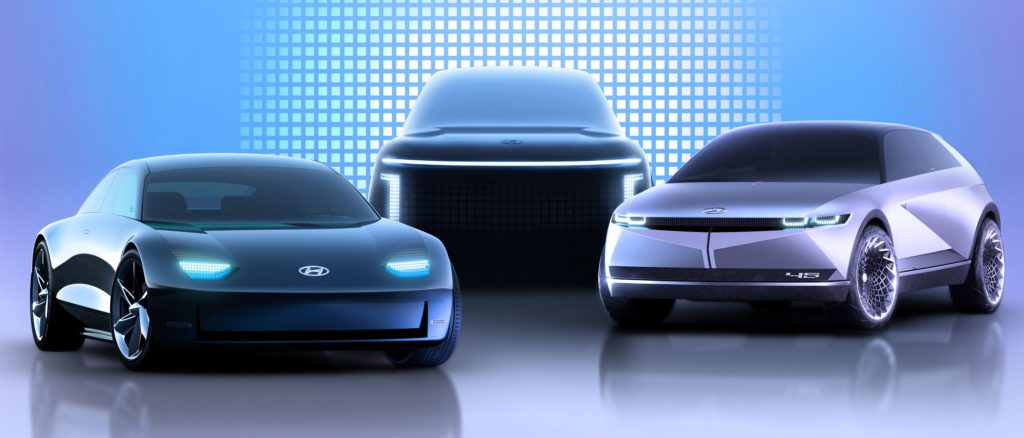Hyundai boosts zero-emission mobility
01 February 2021

1 February 2021
Hyundai is laying out its electrification roadmap for 2021 as it pushes its zero-emission mobility plans. The carmaker hopes to grow both its sales volume and customer-product value in Europe. An essential stepping stone on this journey will be the launch of the Ioniq 5. Announced last year, it will be the first battery-electric vehicle (BEV) built on the OEM’s electric global modular platform (E-GMP) platform.
′Last year was exceptionally important in our transition to future mobility. We made the investment to electrify nearly our entire fleet,’ said Michael Cole, CEO of Hyundai Motor Europe. ′This year, we plan to harvest the fruits of that investment by maintaining our strong market share and selling more EVs than ever before.’
Growing numbers
Hyundai sold 60,000 BEV and fuel-cell electric vehicles in Europe in 2020, accounting for 13% of its European sales. The carmaker points to its zero-emission vehicle sales and strategy as key enablers which allowed it to meet its CO2 target. Moving forward, it will launch more than 12 additional BEVs within the next four years, starting with the Ioniq 5.
The carmaker currently offers 15 electrified models and derivatives in Europe, 11 of which were launched or enhanced in 2020, including the emissions-free Kona Electric. By 2025, the company looks to sell 560,000 BEVs annually worldwide. Then by 2040, Hyundai plans to have electrified its vehicle line up, aiming to account for 8-10% of the global electrically-chargeable (EV) market.
Hydrogen hype
In another recent zero-emissions push, Hyundai announced it had signed a contract with the government of Guangdong Province to establish an offshore fuel-cell-system production facility in Guangzhou, China. Construction is slated to begin this month and should be completed by the second half of 2022. It will be the company’s first fuel-cell production base outside of Korea, with an initial capacity of 6,500 units per year. This number is set to gradually increase with market demand. The site will build the same systems that are currently used in the Nexo fuel-cell electric SUV.
The carmaker will also work with Chinese businesses to take part in the Guangdong government’s hydrogen pilot initiatives, allowing it to secure a competitive advantage in the country’s growing hydrogen industry. Companies from Japan, Germany, the UK and other countries have also been working with Chinese partners to develop fuel-cell-vehicle technology.
In October last year, the China Society of Automotive Engineers published a roadmap which navigates the country’s ambition to foster a hydrogen economy. China aims to have one million FCEVs on its roads by 2035, with a focus on commercial vehicles. By working closely with buisnesses and countries steeped in hydrogen know-how, it can more quickly move along its roadmap.
Elsewhere in the world, the Hyundai hydrogen mobility initiative has so far delivered over 50 Xcient fuel-cell trucks to Switzerland. Each vehicle has the potential to save 32 tonnes of CO2 per year compared to a diesel truck. Over 1,600 Xcient fuel-cell trucks are set to be delivered to Switzerland by 2025. In December 2018, Hyundai announced its ′Fuel-Cell Vision 2030,’ reaffirming its commitment to hydrogen development. As part of the plan, the OEM aims to produce 700,000 fuel cells annually to meet demand from various sectors.
Will Apple rumours bear fruit?
While Hyundai works to promote its E-GMP platform and hydrogen roadmaps, it is also dealing with rumours swirling around a potential collaboration with technology giant Apple. It was reportedly in preliminary talks with the company in January about a BEV tie-up, according to Reuters.
′We are agonising over how to do it, whether it is good to do it or not,’ a Hyundai executive aware of the Apple discussions told the news agency. ′We are not a company which manufactures cars for others. It is not like working with Apple would always produce great results.’
The introduction of an ′Apple car’ would have the potential to disrupt the automotive market given the brand’s large gravitational pull, and the current push within the industry towards electromobility and digitalisation. While both sides remain officially tight-lipped over the potential talks, any rumours could spark a fresh wave of excitement and speculation.